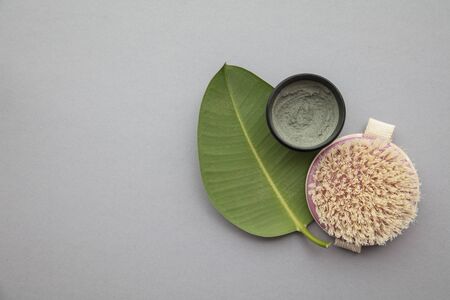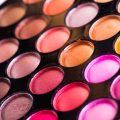Understanding Scalp Exfoliation and Its Importance
Scalp exfoliation is fast emerging as a must-try hair care ritual, especially among Indians who are looking for natural solutions to dandruff and scalp build-up. At its core, scalp exfoliation involves gently removing dead skin cells, excess oil, and residue from the scalp’s surface using scrubs or brushes designed specifically for this purpose. This practice is not just about achieving a cleaner scalp—it’s also crucial for promoting healthy hair growth, balancing sebum production, and ensuring that your hair follicles remain unclogged. For many in India, where heat, humidity, and pollution often lead to itchy scalp and stubborn dandruff, exfoliating the scalp offers a refreshing, holistic approach to hair wellness. With the trend of embracing traditional remedies alongside modern science, more Indians are discovering that regular scalp exfoliation can enhance blood circulation and help control common concerns like flakiness and product build-up. As awareness grows through social media influencers and beauty experts speaking in relatable Hinglish or regional dialects, scalp exfoliation is quickly becoming a favourite in the Indian beauty arsenal—right next to oil champis and herbal hair masks.
Traditional Indian Approaches to Scalp Care
India has a rich tradition of natural remedies for hair and scalp health, with Ayurveda leading the way in promoting holistic well-being. Long before the rise of modern scalp exfoliation trends, Indian households relied on time-tested ingredients to manage dandruff and maintain a healthy scalp. These traditional methods often involve the use of herbs and natural substances that are still widely respected today.
Ayurvedic Ingredients for Dandruff Removal
Ayurveda recommends several powerful botanicals for scalp care. Neem is celebrated for its antibacterial and antifungal properties, making it a popular choice for treating dandruff at its root cause. Reetha, also known as soapnut, is valued for its gentle cleansing abilities that remove dirt and excess oil without stripping the scalp’s natural moisture. Amla, or Indian gooseberry, is rich in vitamin C and antioxidants, which help strengthen hair roots and soothe scalp irritation.
Folk Remedies Still Popular Today
In many Indian homes, these Ayurvedic ingredients are often combined in DIY hair masks or rinses. For instance, a mixture of neem paste and amla juice is commonly applied to the scalp to control flakes and itching. Some prefer soaking reetha overnight and using the liquid as a mild shampoo. The table below highlights common ingredients and their traditional uses:
| Ingredient | Traditional Use | Benefits |
|---|---|---|
| Neem | Pastes or oils applied to scalp | Reduces dandruff, soothes irritation, antibacterial |
| Reetha (Soapnut) | Natural shampoo alternative | Cleanses scalp gently, removes excess oil |
| Amla (Indian Gooseberry) | Masks or hair oil infusions | Nourishes roots, adds shine, anti-inflammatory |
Connecting Traditions with Modern Trends
The new trend of scalp exfoliation in India draws inspiration from these age-old practices but incorporates modern formulations and techniques. While exfoliation now may include specialized brushes or scrubs, the essence remains rooted in deep cleansing—just like our ancestors intended with their use of neem, reetha, and amla. As more Indians seek natural solutions for dandruff, blending traditional wisdom with contemporary methods offers an effective path to healthier scalps.

3. Benefits of Natural Scalp Exfoliation
In India, where traditional beauty secrets are often passed down through generations, the trend of hair scalp exfoliation using natural ingredients is gaining momentum. There are several remarkable advantages to embracing this holistic approach for a healthier scalp and lustrous hair.
Improved Blood Circulation
Gently massaging the scalp with natural exfoliants like neem powder, amla, or fenugreek helps stimulate blood flow. This increased circulation nourishes the hair follicles and encourages healthy hair growth—a practice that aligns perfectly with Ayurvedic routines followed by many Indian families.
Reduced Dandruff and Itchiness
One of the most celebrated benefits among Indian women and men is the visible reduction in dandruff and scalp itchiness. Exfoliating with kitchen-friendly ingredients such as besan (gram flour) or curd removes dead skin cells and excess oil without harsh chemicals, making it a safe bet even for sensitive scalps commonly found in humid Indian climates.
Healthier, Shinier Hair
By clearing away buildup from oil, sweat, and pollution—frequent concerns in metropolitan cities like Mumbai or Delhi—scalp exfoliation ensures that roots can breathe. Regular use of natural exfoliators not only prevents clogged pores but also imparts a natural shine and volume to your hair, giving you that coveted “Desi Girl” glow.
Chemical-Free Care for Every Hair Type
With diverse hair textures across India—from curly South Indian locks to straight North Indian tresses—natural scalp exfoliation offers a gentle, chemical-free solution suitable for all. No parabens, no sulphates—just pure, homegrown goodness.
A Ritual Rooted in Indian Tradition
Infusing weekly hair care routines with ingredients from your kitchen shelf not only strengthens the hair but also reconnects you with age-old wellness rituals. Embracing these benefits makes scalp exfoliation more than just a trend; it’s a celebration of Indian culture and self-care.
4. Popular Ingredients and Home Remedies in India
When it comes to scalp exfoliation, Indian households have long relied on natural ingredients that are both effective and gentle. These time-tested remedies not only help remove dandruff but also nourish the scalp, thanks to their unique herbal properties. Below, we explore some of the most popular ingredients and easy DIY recipes you can try at home.
Common Indian Staples for Scalp Exfoliation
| Ingredient | Benefits | How to Use |
|---|---|---|
| Multani Mitti (Fullers Earth) | Absorbs excess oil, soothes irritation, removes buildup | Mix with rose water to form a paste; apply on scalp, leave for 15 mins, rinse off |
| Methi (Fenugreek Seeds) | Reduces dandruff, promotes hair growth, antibacterial properties | Soak overnight, grind into paste, mix with yogurt; massage on scalp, leave for 30 mins, wash out |
| Dahi (Yogurt) | Cleanses scalp, moisturizes, mild exfoliant due to lactic acid | Apply plain yogurt directly or mix with honey; leave for 20 mins before rinsing |
| Lemon Juice | Removes flakes, clarifies scalp, fights fungus | Add a few drops to any hair mask or dilute with water and apply on scalp for 10 mins |
Easy DIY Scalp Exfoliation Recipes
Methi & Yogurt Scrub
Soak 2 tablespoons of fenugreek seeds overnight. Grind them into a coarse paste and mix with 3 tablespoons of fresh dahi. Apply this mixture onto your scalp in sections and gently massage in circular motions. Leave it on for 30 minutes and then rinse thoroughly with lukewarm water.
Multani Mitti & Neem Pack
Take 3 tablespoons of Multani Mitti and add 1 tablespoon of neem powder. Add enough rose water to make a smooth paste. Apply evenly on your scalp, allow it to semi-dry (about 15-20 minutes), then rinse off with cool water.
Quick Tips:
- Avoid using hot water when rinsing these packs as it can dry out the scalp.
- Limit exfoliation to once a week to prevent over-stripping natural oils.
These traditional Indian remedies bring together heritage wisdom and modern hair care needs. By incorporating such simple yet potent ingredients into your routine, you can naturally combat dandruff while nurturing your scalp’s overall health.
5. How to Exfoliate Your Scalp: Step-by-Step Guide
Step 1: Choose the Right Exfoliant
Select a gentle scalp scrub suitable for your hair type. Many Indians prefer natural ingredients like neem powder, fenugreek (methi) seeds, or ground coffee mixed with coconut oil. You can also opt for ready-made herbal scalp exfoliators available in local beauty stores.
Step 2: Prepare Your Hair and Scalp
Detangle your hair and part it into sections using a wide-tooth comb. This helps ensure even application of the exfoliant and prevents unnecessary breakage, especially for thick or long Indian hair.
Step 3: Apply the Exfoliant
Take a small amount of your chosen scrub and gently massage it onto your damp scalp using circular motions. Focus on areas prone to dandruff, such as the crown and sides. Avoid using your nails; use your fingertips to prevent irritation.
Step 4: Massage and Let It Sit
Spend about 5 minutes massaging the exfoliant into your scalp. This stimulates blood circulation, which is valued in traditional Indian hair care for promoting healthy hair growth. Allow the scrub to sit for an additional 5-10 minutes so the natural ingredients can work their magic.
Step 5: Rinse Thoroughly
Rinse your hair and scalp thoroughly with lukewarm water. Use a mild, sulphate-free shampoo if needed to remove any residue, followed by a nourishing conditioner or a post-wash application of amla or almond oil for extra softness.
Best Practices & Precautions
- Exfoliate only once every 7-14 days to avoid over-drying your scalp.
- If you have sensitive skin or open wounds on your scalp, consult a dermatologist before starting.
- Avoid harsh scrubs or vigorous rubbing, especially if you have curly or chemically treated hair.
Pro Tip for Indian Hair Types
Incorporate traditional post-exfoliation care by applying warm coconut oil overnight. This not only soothes the scalp but also aligns with age-old Indian practices for lustrous, healthy hair.
6. Expert Tips for Maintaining a Healthy Scalp
Insights from Indian Dermatologists and Hair Care Professionals
To achieve the best results with hair scalp exfoliation, following guidance from top Indian dermatologists and hair experts is essential. India’s diverse climate, unique hair textures, and cultural practices require a tailored approach to scalp care. Here are professional tips to help you maintain a healthy scalp while embracing this trending method for dandruff removal.
Frequency: How Often Should You Exfoliate?
Experts in India recommend exfoliating your scalp no more than once a week, especially if you have normal to oily hair. Over-exfoliation can lead to dryness or irritation, which is particularly important in regions like Delhi or Rajasthan, where the air tends to be dry. For those with dry or curly hair types, such as many South Indians, scalp exfoliation can be limited to once every two weeks to avoid stripping away natural oils.
Suitable Hair Types for Scalp Exfoliation
According to Dr. Ritu Gupta, a renowned dermatologist in Mumbai, “Scalp exfoliation works well for most Indian hair types, but it’s especially beneficial for individuals who experience product buildup or live in areas with high humidity.” If you have chemically treated hair, consult your stylist before starting any exfoliation routine. Those with sensitive scalps should opt for gentle natural scrubs made from ingredients like neem powder or besan (gram flour), common in Indian households.
Dos and Don’ts of Scalp Exfoliation
Dos:
- Use gentle circular motions with your fingertips – avoid using your nails to prevent micro-tears on the scalp.
- Choose exfoliants that suit your skin type; natural options like fenugreek paste or aloe vera gel are popular among Indian women for their soothing properties.
- Rinse thoroughly to ensure no residue is left behind, as leftover product can cause further buildup.
Don’ts:
- Avoid harsh chemical-based exfoliators unless prescribed by a specialist.
- Do not over-exfoliate; too frequent scrubbing can disrupt the scalp’s natural barrier and worsen dandruff issues.
- If you notice redness, itching, or increased hair fall after exfoliating, discontinue immediately and seek advice from a qualified dermatologist.
By integrating these expert-approved practices into your weekly beauty routine, you can effectively manage dandruff and promote healthier hair growth naturally. Remember, patience and consistency are key—just as we nurture our skin before special occasions like weddings or festive gatherings across India, our scalp deserves the same thoughtful care!
7. The Future of Scalp Care in India
India’s beauty and wellness sector is evolving rapidly, and the scalp exfoliation trend is set to become a staple in modern hair care routines. As more Indians seek holistic, natural solutions for dandruff and overall scalp health, the market for specialized scalp exfoliation products is expanding at an impressive rate. Brands are introducing scrubs and exfoliating serums infused with indigenous ingredients like neem, tulsi, tea tree oil, and amla—connecting tradition with innovation to appeal to the Indian consumer’s love for herbal remedies.
The rise of self-care culture among young professionals and urban families is driving demand for convenient, at-home treatments that promise salon-like results. Social media influencers and dermatologists are also playing a significant role in raising awareness about the benefits of scalp exfoliation, making it part of weekly hair care rituals alongside traditional champi massages and oiling.
Looking ahead, we can expect to see a wider range of tailored scalp exfoliation products catering to diverse hair types and concerns, from oily scalps common in humid climates to sensitive skin affected by pollution in cities like Mumbai or Delhi. There will be greater emphasis on sustainability, with eco-friendly packaging and clean formulations featuring Ayurvedic botanicals.
This movement reflects the shift in Indian lifestyles—where busy schedules meet a deep-rooted desire for natural wellness. Scalp exfoliation fits perfectly into this balance, offering an easy yet effective way for Indians to maintain healthy hair and confidence in their daily lives.


